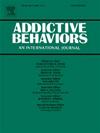残疾人使用单一和多种烟草制品:2019-2022年全国健康访谈调查结果
IF 3.7
2区 医学
Q1 PSYCHOLOGY, CLINICAL
引用次数: 0
摘要
残疾人,约占人口的25%,吸烟和使用各种烟草制品的流行率较高;然而,对这一人群中多种烟草制品(MTP)使用情况知之甚少。本研究评估了残疾人使用MTP的模式。方法分析2019-2022年全国健康访谈研究的数据,以估计在任何残疾和六个残疾领域(认知、沟通、听力、行动、自我保健、视力)的成年人中,单一烟草、MTP以及MTP(多种燃烧、燃烧和非燃烧)的特定组合使用的患病率。多项逻辑回归模型检验了MTP使用与残疾状况之间的关系。结果残疾人群使用单一烟草制品的几率较高(aOR = 1.35;95% CI 1.26, 1.45)和MTP使用(aOR = 1.81;95% CI 1.57, 2.09),与包括多次燃烧使用在内的无任何残疾的患者相比(aOR = 2.01;95% CI 1.62, 2.51)和多次燃烧/非燃烧使用(aOR = 1.70;95% ci 1.43, 2.02)。在认知、听力、行动和视力残疾的人群中,多次燃烧使用的几率也更高,在认知和视力残疾的人群中,多次燃烧/非燃烧使用的几率也高于没有相应残疾的人群。结论残障人群使用MTP的几率较高,因此与非残障人群相比,残障人群可能暴露于更多的有毒物质中,存在更严重的尼古丁依赖风险。未来的研究应该调查这一人群使用MTP的原因,量身定制的戒烟干预措施可能需要考虑到MTP的使用。本文章由计算机程序翻译,如有差异,请以英文原文为准。
Single and multiple tobacco product use among people with disabilities: Findings from the National Health Interview Survey, 2019–2022
Introduction
People with disabilities, approximately 25 % of the population, have a higher prevalence of smoking cigarettes and using various tobacco products; however, little is known about multiple tobacco product (MTP) use among this population. This study assessed patterns of MTP use among people with disabilities.
Methods
Data from the 2019–2022 National Health Interview Study were analyzed to estimate the prevalence of single tobacco, MTP, and specific combinations of MTP (multiple combusted, combusted and non-combusted) use among adults with any disability and six disability domains (cognitive, communication, hearing, mobility, self-care, vision). Multinomial logistic regression models examined the association between MTP use and disability status.
Results
People with any disability had higher odds of single tobacco product use (aOR = 1.35; 95 % CI 1.26, 1.45) and MTP use (aOR = 1.81; 95 % CI 1.57, 2.09) compared to those without any disability, which included multiple combusted use (aOR = 2.01; 95 % CI 1.62, 2.51) and multiple combusted/non-combusted use (aOR = 1.70; 95 % CI 1.43, 2.02). Higher odds of multiple combusted use were also found among those with cognitive, hearing, mobility, and vision disabilities and higher odds of multiple combusted/non-combusted use were found among those with cognitive and vision disabilities compared to those without the respective disability.
Conclusion
People with disabilities have higher odds of MTP use and therefore may be exposed to more toxicants and at risk for more severe nicotine dependence than those without a disability. Future research should investigate reasons for MTP use in this population and tailored cessation interventions may need to account for MTP use.
求助全文
通过发布文献求助,成功后即可免费获取论文全文。
去求助
来源期刊

Addictive behaviors
医学-药物滥用
CiteScore
8.40
自引率
4.50%
发文量
283
审稿时长
46 days
期刊介绍:
Addictive Behaviors is an international peer-reviewed journal publishing high quality human research on addictive behaviors and disorders since 1975. The journal accepts submissions of full-length papers and short communications on substance-related addictions such as the abuse of alcohol, drugs and nicotine, and behavioral addictions involving gambling and technology. We primarily publish behavioral and psychosocial research but our articles span the fields of psychology, sociology, psychiatry, epidemiology, social policy, medicine, pharmacology and neuroscience. While theoretical orientations are diverse, the emphasis of the journal is primarily empirical. That is, sound experimental design combined with valid, reliable assessment and evaluation procedures are a requisite for acceptance. However, innovative and empirically oriented case studies that might encourage new lines of inquiry are accepted as well. Studies that clearly contribute to current knowledge of etiology, prevention, social policy or treatment are given priority. Scholarly commentaries on topical issues, systematic reviews, and mini reviews are encouraged. We especially welcome multimedia papers that incorporate video or audio components to better display methodology or findings.
Studies can also be submitted to Addictive Behaviors? companion title, the open access journal Addictive Behaviors Reports, which has a particular interest in ''non-traditional'', innovative and empirically-oriented research such as negative/null data papers, replication studies, case reports on novel treatments, and cross-cultural research.
 求助内容:
求助内容: 应助结果提醒方式:
应助结果提醒方式:


